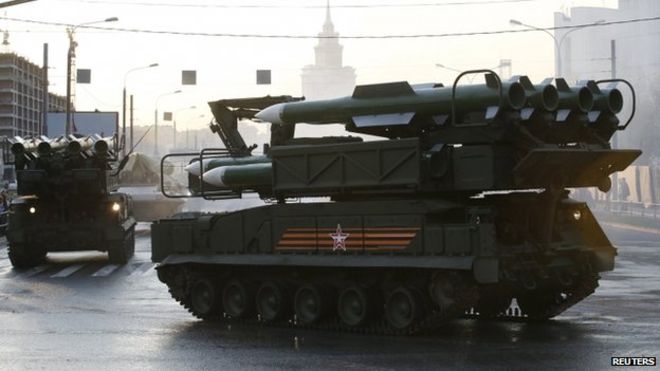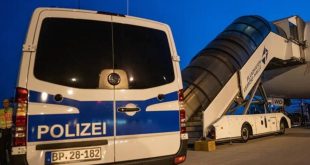“It was a Buk-M1,” announced Novaya Gazeta, considered one of the few independent media publications left in Russia.
The newspaper behind the sensational headline says it obtained a confidential, anonymous report by a group of Russian military specialists, including those working for the top secret company that produces surface-to-air missiles such as the Buk.
The Russian-made Buk has long been the “leading scenario” of international investigators trying to find out what brought down Malaysia Airlines flight MH17 over eastern Ukraine in July last year, killing 298 people.
But this detailed, technical Russian report says the Buk was fired from territory held by Ukrainian forces rather than pro-Russian rebels.
Until now speculation in Russian media has been dominated by claims that MH17 was shot down by an air-to-air missile fired from a Ukrainian SU-25 fighter jet. So the revelation that Russia, too, believes it was a Buk does appear significant.
And yet as early as 21 July 2014, Russia’s ministry of defence said the Boeing 777 had fallen in an area within the range of a Ukrainian Buk-M1 missile launcher.
The same statement said a Buk battery had been detected in Zaroshchenske, a town also named in Wednesday’s Novaya Gazeta report.
The military experts assert that this town was under Ukrainian military control at the time.
Ukrainian officials insist the area was already in rebel hands.
But by naming a new location, the report casts doubt on the town of Snizhne, where international investigators say a Buk missile launcher was seen being driven only four hours before the plane was shot down. Two Russian-based, independent military experts, Pavel Felgenhauer and Vadim Lukashevich, have told the BBC the credibility of the leaked report is questionable because it is anonymous and its source has not been revealed.
Novaya Gazeta’s deputy editor Sergey Sokolov told the BBC that he did not know the names of military experts who worked on the report but he was familiar with their company.
Mr Sokolov pointed out that the newspaper was given access to the report on condition of anonymity, and it considered it important to pass it on to the public.
‘Disinformation ploy’
Mr Lukashevich, an aviation analyst, believes parts of the report are questionable but sees the latest Russian version of events as more plausible than before.
“Only now they have started this clear, systematic and competent campaign; they are beginning to involve specialists,” he said.
“They have finally thrown away the smokescreen of lies, gradually realising that the end is near.”
Military analyst Pavel Felgenhauer said: “I believe this report is a disinformation ploy to shift the blame from the Russian military to the Ukrainian military.” Whatever the truth about the report, it is not the only new information to emerge about MH17, all apparently with the aim of helping investigators get to the facts.
Last week, pro-Russian rebels in eastern Ukraine presented a map, purportedly found in a basement in Donetsk, that showed where Ukrainian army divisions were stationed, apparently with Buk missile launchers.
And there were more revelations to come from the rebels on Wednesday.
Leading Donetsk official Andrey Purgin alleged that flight MH17 was illegally switched from an air traffic controller in Kiev to another further east who changed the plane’s course toward an area with Ukrainian Buk missile launchers.
Mr Purgin said he had passed all his information to international investigators in the Netherlands.
The Dutch Safety Board will present its findings by October 2015. (BBC)
 Afghanistan Times
Afghanistan Times




